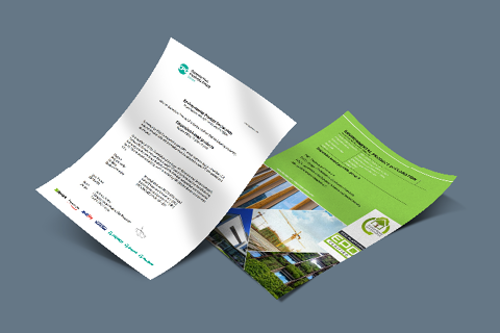Sustainable construction - a balance between development and environmental benefits
Sustainable construction requires a balance between development and environmental benefits and should promote equity between generations, i.e. a better quality of life for current and future generations. When you build with Nudura Insulated Concrete Forms (ICF), the structures will do just that.
Nudura's building designs are sustainable green buildings that often qualify for LEED certification and provide Passivhaus levels of insulation and airtightness. ICF empowers architects, engineers and designers to create buildings that are more efficient, sustainable and have lasting value.
Nudura insulated concrete forms(ICF) provide property owners with an energy-efficient construction that provides maximum comfort and energy solutions. With the combination of rising energy needs and rising fuel costs, property owners should look at different technologies that can be used during construction to heat and cool buildings.
Although building with Nudura requires a different design approach, structures can provide greater energy efficiency compared to a traditional building - so it is worth exploring this building option.
Build sustainably with Nudura
Thermal performance and airtightness
- Air tightness and thermal performance are central to the environmental performance of insulated concrete forms.
Sustainable construction
- Nudura constructions offer a structure built from concrete, one of the most durable building materials, as a result will stand the test of time.
Reduction of waste
- Building with Nudura technology creates less waste during the construction process and is 100% recyclable.


EPS
- EPS is 98% air, which means it is 100% recyclable. With the support of the Building Research Establishment, EPS achieves environmental merit A* - a highly sought-after classification for many building products.
Improved indoor air quality
- When you build with Nudura, you eliminate air gaps, which results in minimizing the potential occurrence of mold growth and draft paths. The result is an airtight structure that enables building systems to heat, cool and ventilate the system more efficiently, creating a healthier living and working environment.
Life cycle analysis
- When comparing an ICF building with more traditional building materials, the results show that Nudura construction outperforms in almost all regions and types of construction. Studies show that operation during operation, including heating and cooling, accounts for the largest part of a building's environmental impact during its lifetime (up to 90 percent). ICF's ability to combine in-situ concrete walls with permanent EPS formwork maximizes airtightness and thermal efficiency, resulting in significantly reduced energy/environmental costs and longevity.
EPD
- An EPD (Environmental Product Declaration) is an environmental product declaration that provides information about a product's environmental impact in a life cycle perspective. EPD documents are available in the Technical Zone.
- A climate declaration must be carried out for new buildings that have been granted planning permission after 2022-01-01 in Sweden and 2023-01-01 in Denmark and Norway. There are exceptions to the requirements for building size, building type, etc. and rules for the requirements. To find out exactly what you need for your project, we recommend that you study the legislation for each country.









